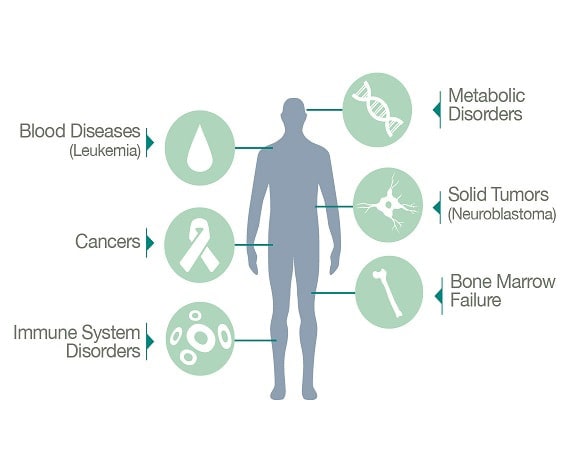What is the difference between cord blood and cord tissue?
It is a question we get asked often. Many people first hear about cord blood banking because the benefits of it were discovered first and cord blood transfusions have been an FDA-approved treatment for years. When conducting further research into the topic, parents may then discover the benefits of cord tissue. The stem cells in cord tissue weren’t identified until the early '90s, and their potential future use in regenerative medicine is still being researched and discovered. This can lead to confusion on how cord blood and cord tissue stem cells compare and whether parents should bank one over the other or bank both.
Cord blood defined
Cord blood is the blood that remains in the umbilical cord and placenta post-delivery. Upon the baby's birth, the umbilical cord is clamped and cut according to the birthing plan arranged with the doctor, leaving an average of 80–120 milliliters, or approximately 1/3 of a cup to 1/2 of a cup, of blood inside. This blood remaining in the cord and placenta is drawn from the cord into a collection bag using a surgical needle.
Despite the seemingly small volume of blood collected, it contains millions of a specific type of the adult stem cell that can go on to form the blood and immune system. It is these stem cells that we isolate, extract, and preserve for their potential future use in the treatment of disease or other medical conditions.
Cord tissue defined
Cord tissue is the insulating material (i.e., the Wharton’s jelly) surrounding the vessels of the umbilical cord. Upon delivery, the umbilical cord will be clamped and cut, and a section of the cord (usually a piece measuring four inches in length) can then be saved. The cord tissue can contain millions of a different type of stem cell that goes on to form a person's nervous system, sensory organs, circulatory tissues, skin, bone, cartilage and more. It is these stem cells that we collect and preserve for their potential future use in the treatment of disease or other medical conditions.
A deeper look at each
Blood provides nutrients and oxygen to all the parts of a body. Cord blood is no different in that it provides nutrients and oxygen, but it provides these life-sustaining substances to the little bundle of joy growing in the mother. All blood contains red cells, white cells, platelets, plasma and stem cells. The main difference between cord blood and the mother's own blood is that the fetal blood is abundant in the hematopoietic (he-mah-toe-po-ee-tic) stem cells that go on to compose the blood and immune system. These hematopoietic source cells are what are isolated and stored when banking cord blood.
Cord tissue has a clear jelly-like appearance. It contains fats, white cells, and stem cells and serves as insulation for the two arteries and one vein found in the umbilical cord. While it contains epithelial (ep-i-thee-lee-al) and endothelial (en-do-thee-lee-al) stem cells, it is a greater source of mesenchymal (meh-sen-ki-mal) stem cells. These stem cells can go on to become the tissues that compose the nervous system, sensory organs, circulatory tissues, skin, bone, cartilage, and more. (Here is an overview of how stem cells work.)
Difference in treatments
 Some of the diseases cord blood treats
Some of the diseases cord blood treatsBecause cord blood and cord tissue are each rich in a different type of stem cell, it makes sense that they would serve as treatments for different diseases or conditions. Both the hematopoietic stem cells in the cord blood and the mesenchymal stem cells in the cord tissue can be used to help heal, regenerate, or otherwise treat a variety of conditions, but the conditions and diseases that they treat don’t often overlap.
Cord blood has been being used in humans for more than 25 years, and between cord blood and cord tissue, it is the only one of the two that has received FDA’s approval to be used in regular treatments. It can be used to treat leukemias, lymphomas, anemias and inherited metabolic disorders. Cord blood is also undergoing clinical trials for the treatment of more advanced conditions such as autism, cerebral palsy, diabetes, eczema, stroke and more.
The potential future use of mesenchymal stem cells, like those in cord tissue, are still being reviewed in clinical trials, but the outcomes thus far have been very promising. They are being used to treat heart and kidney disease, Lou Gehrig's disease (ALS), autoimmune disease, multiple sclerosis, Alzheimer’s disease, Parkinson’s disease, wound healing and even sports injuries.
Best banked together
Cord blood is a proven treatment for more than 80 diseases and conditions, and there are a number of exciting clinical trials underway for its use in other treatments such as cerebral palsy and autism. Cord tissue has an exciting future and shows great potential for the treatment of conditions once thought untreatable.
We believe parents should not only look at the current benefits of banking but also think about what the future may bring. Either cord blood or cord tissue could prove beneficial or even vital to the family because each is rich in a different type of stem cell. While collecting one, the doctor can easily take a minute to collect the other. Add to these reasons the simple fact that a child's birth is the only opportunity to collect these precious stem cells, and we recommend all expectant parents preserve both while they have the chance.